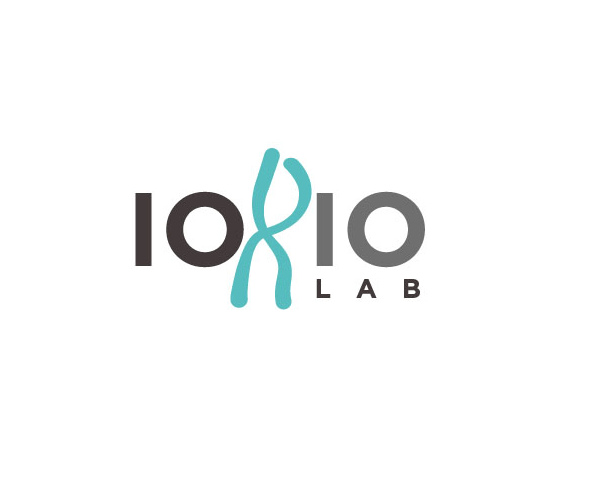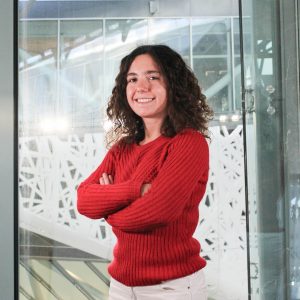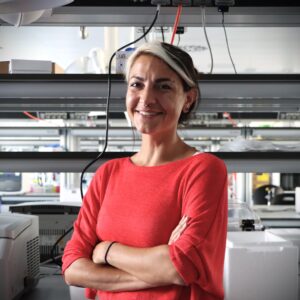
Iorio Group
Iorio group’s Apps, Tools and Computable Manuscripts
The Iorio Group works at the interface of biology, machine learning, statistics and information theory with the goal of understanding and predicting how genomic alterations and molecular traits from other omics contribute to pathological processes, biological circuits’ rewiring and have an impact on therapeutic response in human cancers and other diseases.
Our research aims at advancing human health by designing algorithms, computational tools and novel analytical methods for the integration and the analysis of pharmacogenomics and functional-genomics datasets, with the objective of identifying new therapeutic targets, biomarkers and drug repositioning opportunities.
With our experimental collaborators, we are contributing to the creation of a comprehensive map of all the genetic dependencies occurring in human cancers, and to the development of a computational infrastructure for translating this map into guidelines for early-stage drug development and precision medicine.
The Iorio Group designs, implements and maintains bioinformatics methods and original tools for the assessment of cancer pre-clinical models, the pre-processing, analysis and visualisation of genome-editing screening data, for the in-silico correction of new-technology-specific biases in such data, and for the optimization of single guide RNA libraries for pooled CRISPR-Cas9 screens and other experimental settings.
We are also interested in big-data analytics, the development of biomedical predictive models based on non-biomedical data, and computationally efficient constrained randomization strategies for testing combinatorial properties in large-scale genomic datasets and networks.
Group members
-
 Francesco Iorio
Francesco Iorio
Research Group Leader -
 Fateema Hani Bazzi
Fateema Hani Bazzi
Undergraduate Intern -
 Lorenzo Mathieu Brochier
Lorenzo Mathieu Brochier
PhD Student -
 Ottavio Croci
Ottavio Croci
Senior Data Scientist -
 Irene Fernández Rebollo
Irene Fernández Rebollo
PhD Student -
 Raffaele Iannuzzi
Raffaele Iannuzzi
PhD Student -
 Athanasios Oikonomou
Athanasios Oikonomou
Postdoc -
 Flavio Passante
Flavio Passante
PhD Student -
 Ludovica Proietti
Ludovica Proietti
Postdoc -
 Nevenka Radic
Nevenka Radic
Postdoc -
 Aurora Savino
Aurora Savino
Postdoc -
 Vanessa Spagnolo
Vanessa Spagnolo
Technician -
 Yasin Tepeli
Yasin Tepeli
Scientific Visitor -
 Gianluca Vozza
Gianluca Vozza
Postdoc
Publications
-
07/2024 - Nature Communications
Distinct genetic liability profiles define clinically relevant patient strata across common diseases
Stratified medicine holds great promise to tailor treatment to the needs of individual patients. While genetics holds great potential to aid patient stratification, it remains a major challenge to operationalize complex genetic risk factor profiles to deconstruct clinical heterogeneity. Contemporary approaches to this problem rely on polygenic risk scores (PRS), which provide only limited clinical utility […]
-
01/2024 - Cancer Cell
A comprehensive clinically informed map of dependencies in cancer cells and framework for target prioritization
Genetic screens in cancer cell lines inform gene function and drug discovery. More comprehensive screen datasets with multi-omics data are needed to enhance opportunities to functionally map genetic vulnerabilities. Here, we construct a second-generation map of cancer dependencies by annotating 930 cancer cell lines with multi-omic data and analyze relationships between molecular markers and cancer […]
-
01/2024 - The CRISPR Journal
Benchmark Software and Data for Evaluating CRISPR-Cas9 Experimental Pipelines Through the Assessment of a Calibration Screen
Genome-wide genetic screens using CRISPR-guide RNA libraries are widely performed in mammalian cells to functionally characterize individual genes and for the discovery of new anticancer therapeutic targets. As the effectiveness of such powerful and precise tools for cancer pharmacogenomics is emerging, tools and methods for their quality assessment are becoming increasingly necessary. Here, we provide […]
-
11/2023 - Cell Reports Medicine
RAGE engagement by SARS-CoV-2 enables monocyte infection and underlies COVID-19 severity
The spread of severe acute respiratory syndrome coronavirus 2 (SARS-CoV-2) has fueled the COVID-19 pandemic with its enduring medical and socioeconomic challenges because of subsequent waves and long-term consequences of great concern. Here, we chart the molecular basis of COVID-19 pathogenesis by analyzing patients’ immune responses at single-cell resolution across disease course and severity. This […]
-
07/2023 - Febs Letters
Highlights from the 1st European cancer dependency map symposium and workshop
The systematic identification of tumour vulnerabilities through perturbational experiments on cancer models, including genome editing and drug screens, is playing a crucial role in combating cancer. This collective effort is known as the Cancer Dependency Map (DepMap). The 1st European Cancer Dependency Map Symposium (EuroDepMap), held in Milan last May, featured talks, a roundtable discussion, and a poster […]